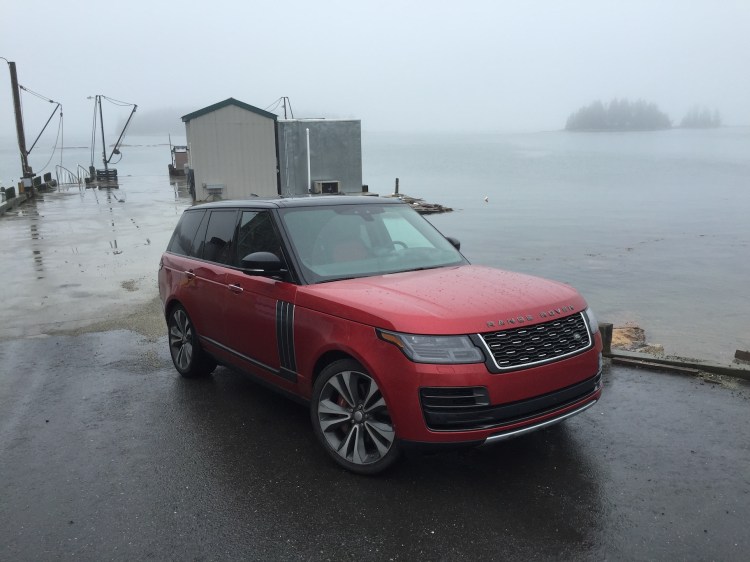The Land Rover auto brand is just as significant to the British as Jeep is to American drivers, due in most part to the importance of the premium Range Rover lineup.
Born in 1970 to complement the smaller Series-II Land Rovers, the original Range Rover was decidedly more utilitarian when compared to today’s ultra-luxurious models. The first three and five-door models featured a Buick V-8 engine or a turbo-diesel four, with production running for an incredible 25 years before the second-generation Range Rover debuted in 1994 as a more upscale product.
By 2002, the third-generation Range Rover’s transformation from functional farm truck to high-end SUV was complete. Then owned by BMW, the staid British truck was instantly more powerful, more opulently endowed inside – including the electronics – while retaining the off-road capabilities first developed for this full-time four-wheel-drive truck.
Today, the fourth-generation Range Rover (as well as Land Rover overall) is owned by Tata Motors from India. Along with reviving Jaguar, Tata will soon use motors developed internally instead of purchased from rivals, restoring more British pride to this storied marquee.
This generation of the Range Rover is far and away the top-selling version, which reflects the improvements seen throughout the multi-vehicle lineup, as well as the industry’s overall success with premium SUVs. The current Range Rover features four different powerplants: a 2.0-liter four with hybrid technology, a 3.0-liter turbodiesel six, a supercharged V-6, plus the supercharged 5.0-liter V-8 sampled, a Ford-based engine.
The Range Rover lineup includes a compact Evoque model, a mid-sized Sport, and a Velar model that is the closest thing to a crossover in the Land Rover lineup. Land Rover dealers also offer two Discovery models, and the long-awaited return of the Defender model is expected later this year.
Land Rover has also announced that the brand will soon feature its first in-line six-cylinder engine, a 3.0-liter motor with supercharging and a 48-volt mild hybrid system.
Central to the Rover’s appeal, beyond its ingrained off-road performance, is the wide spectrum of features and luxury appeal that the model attempts to cover with price points that start at $89,160 for base models all the way to the eye-watering sticker on our SV Autobiography series Dynamic model: $178,495.
One can jest about requesting Grey Poupon from fellow travelers, yet there is no denying that this level of model breadth encompasses every premium SUV from the Land Cruiser/Lexus LX570 ($84,315); Jeep Grand Cherokee Trackhawk ($86,900); and Mercedes GLE63 ($112,855) level all the way to the Bentley Betayga ($200,000); Maserati Levante Trofeo ($171,475) and the Lamborghini Urus ($200,000).
All these full-time AWD performance SUVs are lavishly equipped, extremely powerful, and impressively fast five-passenger sport utility vehicles that can also venture off-road.
Using the supercharged 5.0-liter V-8 here, making 557 hp and 516 pound/feet of low-rev torque with EPA ratings of 14/19 mpg, the SV Autobiography produces serious forward thrust summonsed by gentle tickles of the throttle. The 8-speed automatic can be manually adjusted, an act completely unnecessary, like the auto-levelling air suspension, the automatically closing doors, and the self-adjusting headlights. The Rover experience is one of satisfying your driving needs, even those you didn’t know you had.
In two-tone paint, black roof over Firenza Red body, the SV also features a handsome blood-red leather interior that uses 14-way power seats featuring heated stone massage. These quilted and perforated Semi-aniline bucket seats – powered front and rear – also have power cooling. There is gesture control for the power liftgate, still a split panel affair with a small lower tailgate, as well as the power sunshade for the dual-panel sunroof. Four-zone climate, 10-inch touchscreen with navigation, Wi-Fi, Driver Condition Monitoring, and a plethora of driving aids are included.
The air suspension has multiple modes, including auto-lowering for improved ingress and egress, which complements the off-road Terrain Response System traction modes available for sand, mud, and terrain challenges that you might tackle with the massive 22-inch wheels and active-locking rear differential. While it would be unnecessary abuse to take the SV Range Rover on the Rubicon Trail, Range Rover wants drivers to feel that they can conquer almost everything else, in pure luxury.
It has been 11 years since Tata Motors combined Land Rover with Jaguar, restoring increased production to the Solihull, England production complex that the British believe is the new core to their long-abused auto industry. While GM and Ford don’t compete on this premium-vehicle stage, it is admirable that Tata (and Land Rover) are determined to fight with Volkswagen (owner of Audi, Porsche, Bentley and Lamborghini), Mercedes, BMW, FCA (owner of Maserati) for marketshare in this lucrative segment.
The pace of improvements and constant investment in Land Rover and Jaguar have demonstrated that Tata is in the game for the long run.
Send questions/comments to the editors.




